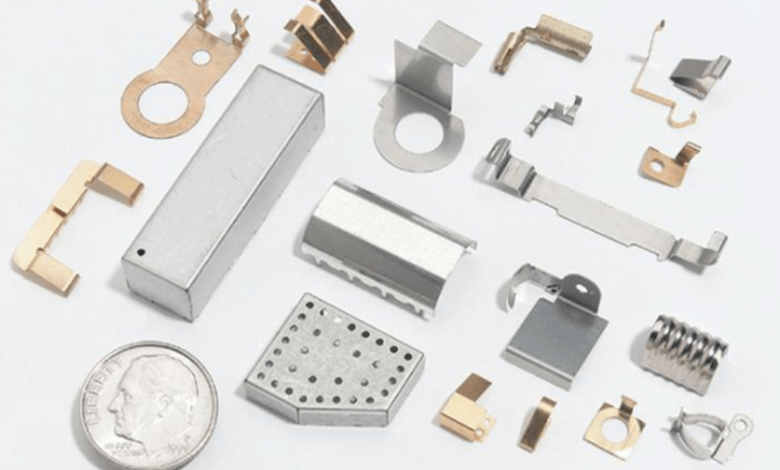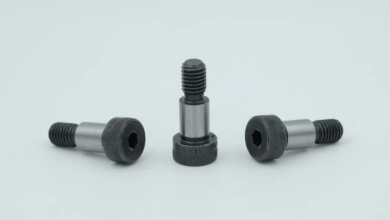Everything You Need to Know About Metal Stamping Parts: Applications, Processes, and Benefits

In the world of modern manufacturing, metal stamping parts play a crucial role in countless industries. From the smallest electrical connectors to the frame of an automobile, stamped metal components are everywhere. Thanks to their durability, precision, and cost-efficiency, these parts have become indispensable in high-volume production settings.
In this article, we’ll explore the fundamentals of metal stamping, the types of metal stamping parts available, their applications across various industries, and what makes this fabrication method such a valuable asset in global manufacturing.
What Are Metal Stamping Parts?
Metal stamping parts are components created by shaping flat metal sheets into specific forms using a stamping press. The process typically involves placing a metal sheet or blank into a stamping die and applying force with a press to cut or shape the metal.
These parts can be as simple as washers or as complex as precision-engineered components used in aerospace or medical devices. The repeatability and accuracy of this process make it ideal for producing thousands — or even millions — of identical components with minimal waste.
See also: Bi LED Lens Technology: The Future of Night Driving from the Best LED Headlight Brand
Common Types of Metal Stamping Operations
Several processes can be used to create metal stamping parts each tailored to specific design requirements. These include:
1. Blanking
Blanking cuts the metal sheet into the basic shape of the part. This is often the first step in the stamping process.
2. Piercing
Piercing creates holes or cutouts in the material, often used in automotive and electrical applications.
3. Bending
Bending alters the angle of the metal, helping to create 3D forms from flat sheets.
4. Forming
Forming involves reshaping the metal without cutting it, often to make curved or intricate designs.
5. Drawing
Drawing stretches the metal into a desired shape, often used for producing cups, cans, and enclosures.
6. Coining and Embossing
These are finishing techniques used to add textures, logos, or other features to the surface of a part.
Materials Used for Metal Stamping Parts
The choice of material is critical and depends on the intended application. Common materials include:
- Aluminum – Lightweight, corrosion-resistant, and easy to work with.
- Stainless Steel – Offers excellent strength and corrosion resistance.
- Copper and Brass – Ideal for electrical applications due to high conductivity.
- Carbon Steel – Strong and cost-effective, widely used in structural components.
- Nickel Alloys – Used in extreme environments such as aerospace or marine parts.
A quality supplier of metal stamping parts will offer material recommendations based on your application, performance expectations, and budget.
Advantages of Using Metal Stamping Parts
1. High Production Speed
Metal stamping is incredibly fast, especially for high-volume production. Automated feeding systems can further reduce lead times.
2. Precision and Repeatability
With high-quality dies and modern CNC-controlled presses, metal stamping delivers parts with tight tolerances and excellent consistency.
3. Cost Efficiency
Because it is suited to large production runs, the cost per unit decreases significantly, making it economical for mass manufacturing.
4. Design Flexibility
Complex parts with intricate geometries can be produced using progressive die stamping, which combines multiple operations in a single cycle.
5. Minimal Waste
Stamping operations are highly efficient, resulting in reduced material waste compared to other methods like machining.
Applications of Metal Stamping Parts
Metal stamping parts are used across a wide range of industries due to their versatility and reliability.
Automotive Industry
- Brake and suspension components
- Seat frames
- Engine mounts
- Body panels
Electronics
- Battery contacts
- Electrical connectors
- Housings for sensors and devices
Aerospace
- Structural components
- Shielding for avionics
- Mounting brackets
Medical Devices
- Surgical tools
- Device enclosures
- Precision brackets
Consumer Goods
- Appliances
- Tools
- Furniture components
Progressive Die Stamping vs. Transfer Die Stamping
Two common methods used in producing metal stamping parts are progressive die and transfer die stamping:
Progressive Die Stamping
- Performs multiple operations in a single press cycle
- The part moves through different stations in a continuous strip
- Ideal for high-volume, complex part production
Transfer Die Stamping
- Individual parts are transferred from one station to another
- Allows for deeper draws and larger parts
- Common in automotive and heavy equipment industries
Your choice between these methods will depend on part complexity, size, and volume requirements.
Choosing the Right Supplier for Metal Stamping Parts
When sourcing metal stamping parts, the quality of the supplier is just as important as the quality of the part. Here are some factors to consider:
1. Engineering and Design Support
Choose a partner who offers design for manufacturability (DFM) assistance to ensure your part is optimized for stamping.
2. Tooling Capabilities
In-house tooling design and maintenance can reduce costs and lead time.
3. Material Sourcing
A good supplier will offer a variety of material options and maintain reliable relationships with steel mills.
4. Certifications and Quality Control
Look for ISO 9001, IATF 16949, or AS9100 certifications as proof of quality management.
Conclusion
As industries move toward greater precision and efficiency, metal stamping parts continue to offer unmatched advantages. Their affordability, accuracy, and versatility make them a cornerstone of modern manufacturing — whether you’re building automobiles, electronics, or surgical tools.
Working with a skilled and reliable supplier who understands your industry and product requirements ensures that you get the best results from your investment. From material selection to tool design and final inspection, every step in the process contributes to the quality and performance of your stamped metal components.
For businesses looking to streamline production without sacrificing quality, incorporating metal stamping parts is not just a smart move — it’s a competitive necessity.




